 Your new post is loading...
 Your new post is loading...
Winning in digital media now boils down to a simple equation: figure out a way to produce the most content at as low a cost as possible.
In recent years, new players like The Huffington Post burst onto the scene by pumping out a dizzying amount of content each day. The company has 532 full-time editorial staff producing about 1,200 pieces of content per day (and that’s not including the 28 full-time blog editors who oversee the 400 pieces of content per day coming from its blog). All this content generates 43 million pageviews per day, per Comscore. The pageview race now stretches far beyond HuffPost, as many publishers combat low ad prices with high volume.
Even old publications, like Forbes, are taking part in the pageview race. It has 50 on its editorial team. However, it also has about 1,000 contributors. Between the two, Forbes puts up about 400 posts per day and sees 4 million pageviews per day, per Comscore. The company doesn’t separate out how much the staff and contributors put out. But last year, the company posted its best financials since the 2008 industry collapse and saw digital ad revenue spike 19 percent year-over-year. Quantity pays the bills....
In a study titled “The New Normal for News,”Oriella PR Network surveyed more than 500 journalists spanning 14 countries (Australia, Brazil, Canada, China, France, Germany, India, Italy, New Zealand, Russia, Spain, Sweden, the UK and the US).
The main finding? Digital media is more entrenched than ever before.
Oriella’s Global Digital Journalism Study 2013, the organization’s sixth annual investigation into the role and impact of digital media in newsrooms and news-gathering worldwide, reveals some interesting insights about tech age journalists. A few poignant highlights...
...The company is finding that the most popular content for tablets depends on the title. Golf Digest sees great success with video. Generally speaking, long-form editorial content like actual stories, video and slideshows do well across the board because the tablet is a lean-back device, where consumers aren’t looking for short snippets of content like they are on a mobile phone, for example.
“If you look at the time of day with highest tablet usage it’s usually during prime time or on the weekends,” Reynolds said. “That’s why we are developing tablet-specific content to fit that different mindset. We’re not worried about tablet usage cannibalizing Web usage because Web, tablet and mobile, are all part of a complementary ecosystem.”
Reynold’s said that the biggest opportunity for Conde Nast in the tablet space is the amount of data is has on subscribers. It gives the publisher a look at the preferences that people have for content and advertising on specific devices and Conde Nast can optimize based on that.
... Scribble’s traction is international; its ScribbleLive real-time content creation and distribution platform is available in 14 languages and used by the biggest media brands, including the Associated Press, Reuters, CNN and ESPN to name a few. I spoke with Scribble CEO and co-founder Michael De Monte about the raise, and his vision for the company.
He pointed out that Scribble recently launched ScribbleMarket, a way for brands to easily syndicate their live content, and to find said content from other sources for use on their own site. Licensing can be free or paid, and this lets news agencies quickly leverage their reporting resources for additional income streams, by providing not just static articles for syndication as has been the case, but full-featured, interactive real-time content that’s being dynamically updated from a single backend.
quiet“The marketplace for us is the exciting component of what we’re building,” De Monte said. “This opportunity to share content in real time, becoming like the iTunes of real-time content has a lot of potential to change the face of media.”...
OMG BuzzFeed has gone Fortune and its Original Trust Content one better. Instead of cranking out BuzzFeed-like content for corporate-owned media, the publication will teach you how to draft stories like the pros. That’s right. You too can write scintillating headlines like “15 Reasons Taylor Swift Might Be a Cat” or “27 Better Ways to Eat Ramen.” It’s another form of journalists reaching into corporate pockets with the value proposition, “We can help with that burdensome chore called content development.”
Not long ago, the media looked at the web as if it was an awkward, unwanted stepchild. Today, the reverse is arguably true, with debate growing over whether social networks such as Twitter will overtake beacons of journalism like The New York Times. At last month's Milken Institute Global Conference, PayPal co-founder Peter Thiel said he thinks Twitter will outlast The Times. His reasoning: Its business strategy is more solid than that of the storied newspaper. The debate got journalists talking on forums such as Muck Rack, with many people disagreeing. Some said it isn't a mutually exclusive relationship, or that one's success is predicated on the other's failure....
BuzzFeed gets free content, users get exposure, we get 11 Engagement Photos That Will Make You Happy You’re Single. ... The department devoted to creating this “old school” content is known as BuzzTeam. Their focus is anything shareable — lists, animals, nostalgia. The kind of content that BuzzFeed’s loyal readers have become hyper-familiar with. Many, in fact, have consumed so many such BuzzFeed posts that they’ve become adept at mimicking both their tone and their viral success. Earlier this month, BuzzFeed’s editors took a step toward giving those faithful followers a little more of the spotlight they crave. Shepherd, along with a staff of four, now run BuzzFeed Community, a content-producing vertical of its very own, complete with featured posts by community members and a leaderboard with the latest on who’s posts are getting the most traffic, likes, comments, and badges. It’s a competitive place, and anyone can join and enter the fray....
In the U.S. and abroad, a new set of B2B media products are showing there's room for growth in niches — and that there's new power in incumbency.... ...Much of Atlantic Media’s sales, marketing, analytics and financial functions can be leveraged to support the new product, minimizing what would be similar expense for a one-off start-up. Also like Quartz, it is going free, looking to marketers to make it profitable. It isn’t just an ad play. Rather, it looks to an emerging model of higher-end sponsorship and content marketing — with the important adjunct of events marketing — to propel it forward. Its offer to marketers will follow the playbook of what Atlantic Media’s half-dozen other publications (The Atlantic, The Atlantic Wire, The Atlantic Cities, Quartz, National Journal, Government Executive) now offers. It’s on-site sponsorship/share-of-voice placement, content marketing, and marketing services aid and placements and sponsorship of physical events. That events business rides right alongside inclusion on its websites, providing marketers with a brand association that fluidly moves from online to off and back. It’s a strategy now well-employed in D.C. — also exploited by Politico and The Washington Post — and among events leaders like The Texas Tribune. Atlantic Media has turned events into a potent, higher-margin revenue source, now accounting for around 16 percent of revenues....
... You may have heard of Matthew Keys. He’s a journalist who was indicted by the Department of Justice (DoJ) for allegedly “giving hackers access to the servers of his former employer, the Tribune Company. Tribune owns the Los Angeles Times, which the Anonymous hacker subsequently defaced.” Keys was also, until recently, the social media editor for Reuters. After being let go today, he shared the news organization’s Twitter guidelines – and they demonstrate the dangers of combining personal and professional tweets online. In a blog post, Keys shares reasons why Reuters was mad at him (and fired him) and that list includes the following: "Reuters said it had a problem with the perceived relationship between my Twitter account and their news organization. A Reuters manager said it was troublesome that several people associated my work on Twitter with the company, pointing to my Twitter bio that said I was a Reuters journalist. Reuters’ Twitter Guidelines, which you can read here, states that Reuters journalists are always expected to identify themselves as such"....
When big news breaks, a common impulse is to turn to CNN, but the network suffers from self-inflicted damage. ...So what is the real damage of a midweek stumble in a very complicated story? When the story was breaking on Friday, CNN had its biggest nonelection rating in 10 years. People at CNN said that they got significant blowback from sources, but Mr. Zucker seemed fine with the overall effort, issuing a hero-gram to the staff on Friday, before the final chapter unfolded. “All of you, across every division of CNN Worldwide, have done exceptional work,” the memo read. “And when we made a mistake, we moved quickly to acknowledge it and correct it.” That’s one way to spin it. I talked to several competitors who did not commit the same error, and one spoke for many when he said: “It was bad enough — really, really bad — so that they made all of us look terrible. Nobody comes away a winner from something like this.” If legacy media were falling short, the new order did not look all that promising either. A crowd-sourced witch hunt took place on Reddit, identifying innocents as suspects, and Twitter was alive with both misinformation and outrage at the mistakes. (There were many curiously triumphal posts about the death of old media in Twitter feeds that were full of links to that same old media.)...
Guardian digital development editor Joanna Geary answers some questions about GuardianWitness.... ...First up: this was built in two months. The sponsorship pot from EE gave them a budget and time to get the job done, but not necessarily have everything they wanted at launch. She says it's a complete, working system that can be built upon. I suggest the phrase "minimum viable product" to Jo but she suggests that it's a full product - one that will be built on. Do they have aspirations for more integration with social media? Yes, they do. And it's something they're looking at as the system develops. The key part of the development which is invisible to us right now is that the Guardian Witness system is deeply integrated with the Guardian's CMS. Once the content has passed through verification, it's available to the journalists, and they can insert it into a story or liveblog just by inserting an URL, which creates an embedded version of the contribution that links back to the contributor's profile. "The really exciting thing is not what you see now, but what you see when Witness is included in a story," she says. It's a tool to facilitate genuine collaborative working between the journalist and external witnesses. Jo says they'll collaborate with people on the ground, or with expert knowledge, in any way they can - and already do, via phone and other traditional methods. This adds another tool for doing that....
“Twitter does its best work in the first five minutes after a disaster, and its worst in the twelve hours after that.” - @rolldiggity There is a quiet that descends in a newsroom when a big story breaks.... Twitter has often been touted as the “first with news”. From the miniscule to the massive. From Stephen Fry being stuck in a lift, to the Arab Spring rippling across North Africa, it is the instant source of a story, the first gurgle from a tap. The only way to find out what’s really happening, according to some. But I’m beginning to think that so-called truth is losing some of its polish. I follow about 700 people on Twitter. I actually “watch” about three times that amount. I have lists of people I don’t follow. In other words, I can see them, without having to follow them. News people, experts, specialists, comedians, doctors, police officers, bloggers and bohemians. I’ve been on Twitter for more than three years. I like to think I’ve found much of the gold within its mines. When the first tweets about the Boston marathon explosions popped up in my timeline, I went over to my newsroom colleagues. I told them what was happening. And the process began. And I watched Twitter....
... News is irrelevant. Out of the approximately 10,000 news stories you have read in the last 12 months, name one that – because you consumed it – allowed you to make a better decision about a serious matter affecting your life, your career or your business. The point is: the consumption of news is irrelevant to you. But people find it very difficult to recognise what's relevant. It's much easier to recognise what's new. The relevant versus the new is the fundamental battle of the current age. Media organisations want you to believe that news offers you some sort of a competitive advantage. Many fall for that. We get anxious when we're cut off from the flow of news. In reality, news consumption is a competitive disadvantage. The less news you consume, the bigger the advantage you have....
|
...Up to 15 seconds of video, 13 custom filters, and a "cinema mode" for stabilization. Those were some of the features added to Instagram last week, instantly turning the popular photo-sharing app used by 130 million people into a video-sharing service. Within the first 24 hours of the announcement, over 5 million videos had been uploaded.Sure, some were of frothy lattes and the Miami Heat winning the NBA finals, but the new features have wider appeal than to just casual users.
As newsrooms are now relying on social media as a platform to discover and deliver the news, Instagram's new video features will add another piece of content into the mix for organizations: short, solid-looking video clips.Beth Bennett, assistant professor at The Medill School of Journalism, Media, Integrated Marketing Communications at Northwestern University, believes this will be the next big thing for news organizations....
Traditional journalists probably won't like a lot of how Upworthy's become one of the fastest growing aggregators on the web. But it's hard to question the effectiveness of its methods.
Back in November, the Lab’s own Adrienne LaFrance wrote a number of words about Upworthy, a social packaging and not-quite-news site that has become remarkably successful at making “meaningful content” go viral. She delved into their obsession with testing headlines, their commitment to things that matter, their aggressive pushes across social media, and their commitment to finding stories with emotional resonance.
Things have continued to go well for Upworthy — they’re up to 10 million monthly uniques from 7.5. At the Personal Democracy Forum in New York, editorial director Sara Critchfield shared what she sees as Upworthy’s secret sauce for shareability, namely, seeking out content that generates a significant emotional response from both the reader and the writer....
The best thinking about journalism’s future benefits from its being in touch with technology’s potential. But it can get in its own way when it simplifies and repudiates the intelligence of journalism’s past.
That is happening, to a degree, in a discussion gaining momentum lately that journalism should now largely move beyond fact gathering and toward synthesis and interpretation.
The NSA story is just the latest case that shows the importance, and the elusiveness, of simply knowing what has really happened.
In a Nieman Journalism Lab post, Jonathan Stray made the case recently for moving beyond facts, or what might be called The Displacement Theory of Journalism. “The Internet has solved the basic distribution of event-based facts in a variety of ways; no one needs a news organization to know what the White House is saying when all press briefings are posted on YouTube. What we do need is someone to tell us what it means.”...
Reports on traditional news outlets, such as print and broadcast struggling to be financially viable. are nothing new. In a previous blog post, I quoted a statistic from IBM that claimed 90 per cent of all data has been created in the last two years alone.
With the rise of social media and the ability for anyone with access to a computer to create a blog, the supply of possible news sources has exploded since the web gained mainstream acceptance years ago. The public’s demand for content and news has dramatically increased. However, the exponential growth in supply of news sources such as social media, 24-hour news channels, and everything in between, has created a glut of information effectively driving down the value of real news. This is essentially a supply-and-demand problem. Combined with disruptive technology and better methodologies for advertising, traditional media outlets have been forced to make changes to the ways in which they report and monetize news content....
Film stars are no longer the reader magnets they once were, so magazines are turning to TV actors, reality stars and musicians. Pity the poor Hollywood film stars: they can’t open movies the way they used to and now they can’t sell magazines. Even a few years ago, the prize for a magazine editor was in luring an A-list Hollywood star onto the cover. But just as much critical attention has shifted to television from theatrical releases, readers are now more likely to pick up a magazine featuring a television actor, reality star or musician. “There was a day when movie stars were the gold standard for magazines,” said Jess Cagle, the managing editor of Entertainment Weekly, where the frequency and sales of TV-oriented covers are catching up with film covers. “But movie stars are less revered than they used to be, and also audiences have shifted their allegiance in large part to television.”
The writing has been on the wall for some time. Back in 2004, for example, studies indicated that television viewing would be one of the first leisure activities to be hit by Internet use and online socializing. (Other activities supposedly affected were sleeping and real-world socializing.) Though today, TV continues to remain the dominant medium, the emerging generation of so-called “digital natives” – the first to have been born into a world where consumer adoption of the web was already mainstream – seem to prefer other behaviors. And it’s more than just splitting time between TV and video games, or TV and mobile apps, or TV and online video. That’s why it’s funny that the general assumption is that services like Netflix, Amazon Instant Video, Hulu and YouTube will eventually claim users’ time and eyeballs in the way that the “boob tube” once did. That may not be the case. We just don’t know yet. For a generation who grew up on the web, can we say for sure that watching TV-like content through other devices will be their preferred downtime activity? TUMBLR AS THE NEW “TV” Tumblr founder David Karp doesn’t seem to think so. Having built up an online community that Yahoo just acquired for $1.1 billion, he told Charlie Rose in an interview this week that Tumblr is part of a larger transition in consumer behavior.....
Gawker is about $80,000 into a cheeky scheme to raise a couple hundred grand to pay some drug dealers for a video that allegedly shows Toronto Mayor Rob Ford smoking crack. The “Crackstarter” campaign has caught some flak on ethical grounds – some people are uncomfortable with the idea of a news organization paying drug dealers for anything – but put those concerns aside and you can see that Gawker’s experiment presents a pretty useful case study for the idea of crowdfunding journalism....
Twitter is a frenemy," said Jeff Zucker, CNN's new president, as reported by MediaShift. Jeff Zucker was describing the cable news network's relationship with social media and added, “the network uses, relies on -- and is scared by -- social media.” Twitter had a marquee moment last week, particularly late Friday afternoon and evening, that should scare most television news outlets in the business of reporting breaking news. That’s when Boston Marathon bombing suspect Dzhokhar Tsarnaev was cornered by police, trapped and almost bleeding to death inside a covered boat in a backyard in Watertown, Mass....
A crowdsourced hunt for the bombers was unambiguously counterproductive ...There’s an art to working out where to find fast and reliable information, and to judging new information in light of old information, and to judging old information in light of new information. And there’s an art to synthesizing everything you know, from hundreds of different sources, into a single coherent narrative. It’s not easy, it’s not a skill that most people have, and it’s precisely where news organizations add value.
But in this particular case, as Noah Brier points out in a post headlined “Being Part of the Story”, it’s something that millions of people ended up attempting to do, on the fly, anyway: "Everyone wanted to be involved in “the hunt,” whether it was on Twitter and Google for information about the suspected bomber, on the TV where reporters were literally chasing these guys around, or the police who were battling these two young men on a suburban street. Watching the new tweets pop up I got a sense that the content didn’t matter as much as the feeling of being involved, the thrill of the hunt if you will. As Wasik notes, we’ve entered an age where how things spread through culture is more interesting than the content itself."
Yesterday I quoted my old boss at the New Statesman. Today it’s Jon Snow, Channel 4 News presenter and Charlie Beckett who now runs Polis at the London School of Economics and was previously a programme editor at Channel 4 News. Both had interesting things to say about the evolution of news in the networked age. Both were talking heads in the final part of Steve Richards’ Making News series on Radio 4....
Today’s annual report on the State of the News Media shows that new technologies really are pressing journalists to do much more with much less. Last week, we learned that newspaper industry ad revenue was down 7.3 percent this year to its lowest level since 1984 (or 1954, adjusted for inflation). As a result, newsrooms continue to shrink. But The Project For Excellence in Journalism’s report shows us that the needs and demands of the audience are growing and fragmenting. Social media is an important source of news, the report says, but remains smaller and only “supplemental” to other discovery methods like directly visiting a news website, searching the Web or browsing an aggregator....
TV and social media coverage of Boston bombings was repetitive and speculative. The story will unfold in coming days.... The Steve Silva boston.com footage of the Boston marathon finish line explosion is the new World Trade Tower plane implosion is the new Zapruder tape. Another national horror leaves a scar. We know the drill: The moment of violent disruption, the sense of shock oddly mediated by the screen, replayed endlessly — now on every platform. The repeated images become mere images, first shocking then numbing. At some point, perhaps to distance ourselves from the pain, we focus on the conflicting reports of the smallest detail: how many seconds elapsed between the first explosion and the second? First we heard “a few.” Then a more definitive “13 seconds.” Then “between 10 and 20.” Every network had a different count. At some point we started counting ourselves, timing the moments with every replay. Could’ve been 13, but the speed of sound is faster than the speed of video, isn’t it? We were told that cell service was disrupted so as not to set off additional bombs. That report was then retracted. We heard the JFK Library had a third bomb. That report later knocked down. A suspect was held at Brigham and Women’s Hospital. Authorities later said not so. More unexploded bombs? Maybe, maybe not. Information moves faster than knowledge and still the finish-line explosion footage rolls....
|



 Your new post is loading...
Your new post is loading...



![59% Of Journalists Worldwide Use Twitter, Up From 47% In 2012 [STUDY] | AllTwitter | Public Relations & Social Marketing Insight | Scoop.it](https://img.scoop.it/_IEjy0BuV5YqA9_EGpopbzl72eJkfbmt4t8yenImKBVvK0kTmF0xjctABnaLJIm9)

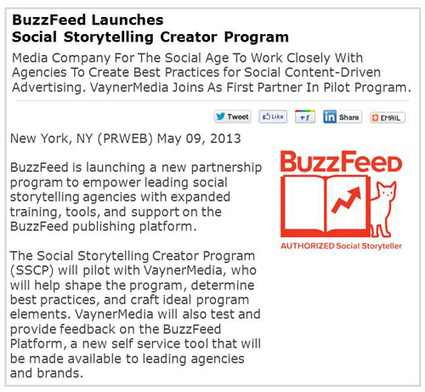
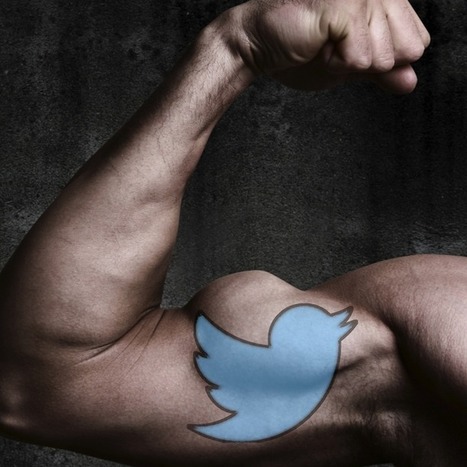



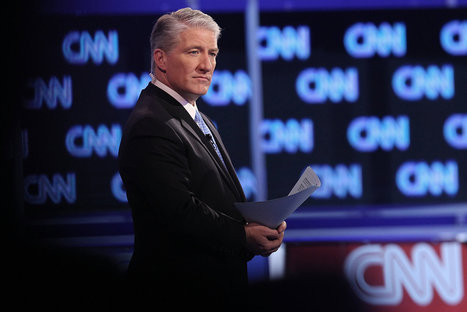
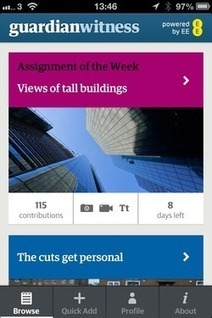




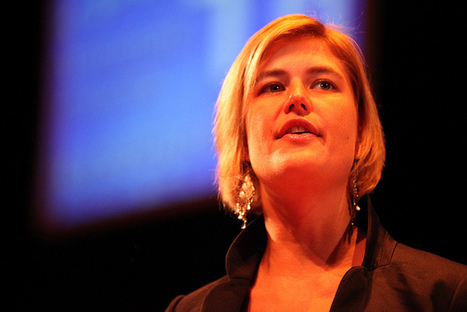

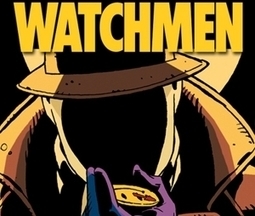









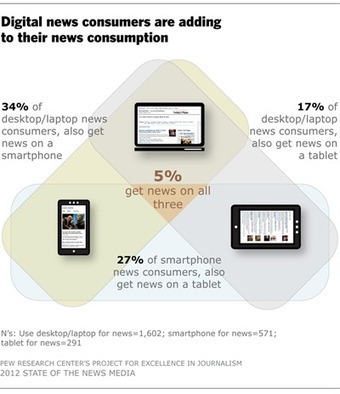






The numbers tell it all. Quantity over quality wins in digital media. That is, if your quality exceeds a base level. Very interesting data.